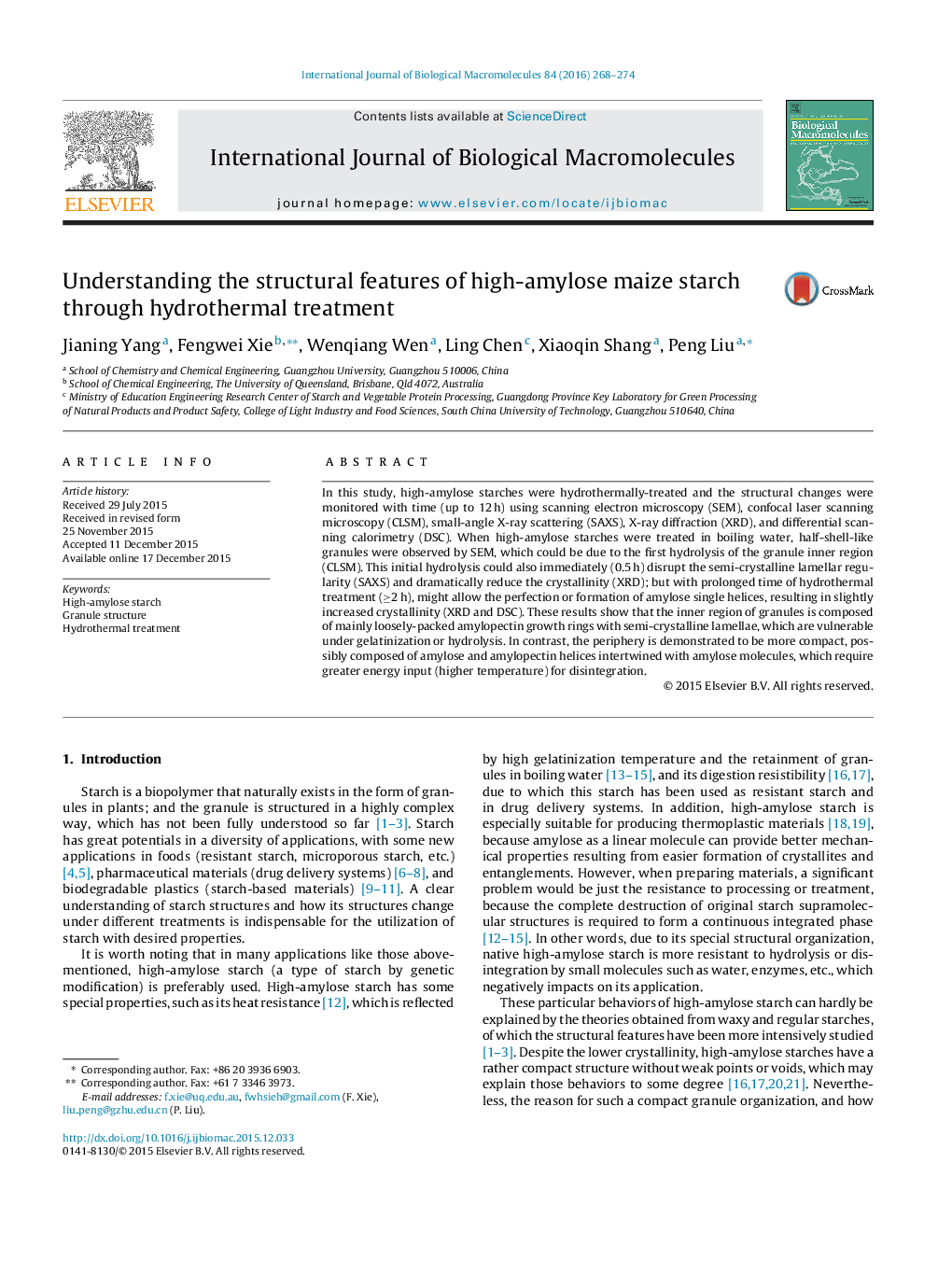| Article ID | Journal | Published Year | Pages | File Type |
|---|---|---|---|---|
| 1986006 | International Journal of Biological Macromolecules | 2016 | 7 Pages |
In this study, high-amylose starches were hydrothermally-treated and the structural changes were monitored with time (up to 12 h) using scanning electron microscopy (SEM), confocal laser scanning microscopy (CLSM), small-angle X-ray scattering (SAXS), X-ray diffraction (XRD), and differential scanning calorimetry (DSC). When high-amylose starches were treated in boiling water, half-shell-like granules were observed by SEM, which could be due to the first hydrolysis of the granule inner region (CLSM). This initial hydrolysis could also immediately (0.5 h) disrupt the semi-crystalline lamellar regularity (SAXS) and dramatically reduce the crystallinity (XRD); but with prolonged time of hydrothermal treatment (≥2 h), might allow the perfection or formation of amylose single helices, resulting in slightly increased crystallinity (XRD and DSC). These results show that the inner region of granules is composed of mainly loosely-packed amylopectin growth rings with semi-crystalline lamellae, which are vulnerable under gelatinization or hydrolysis. In contrast, the periphery is demonstrated to be more compact, possibly composed of amylose and amylopectin helices intertwined with amylose molecules, which require greater energy input (higher temperature) for disintegration.
